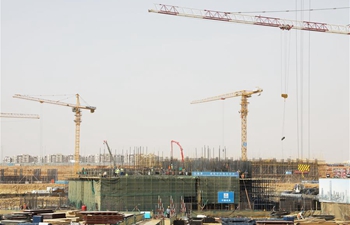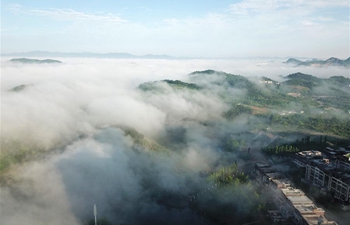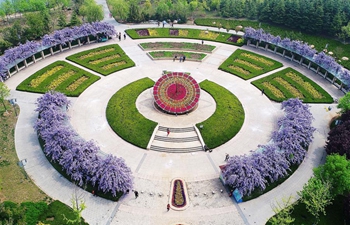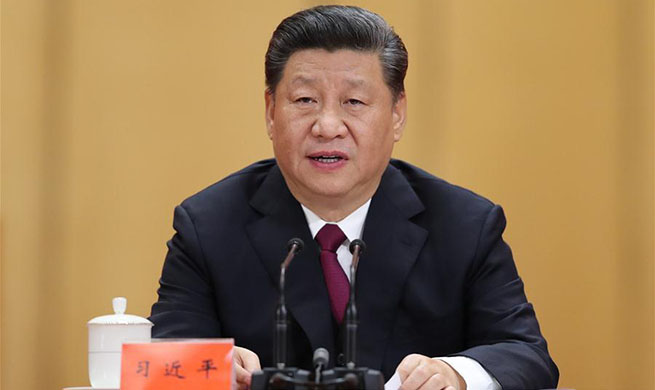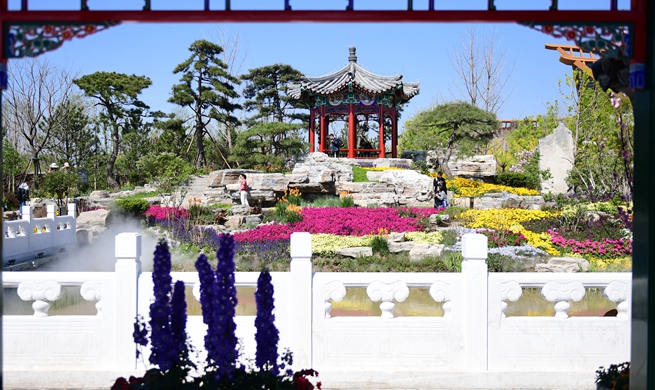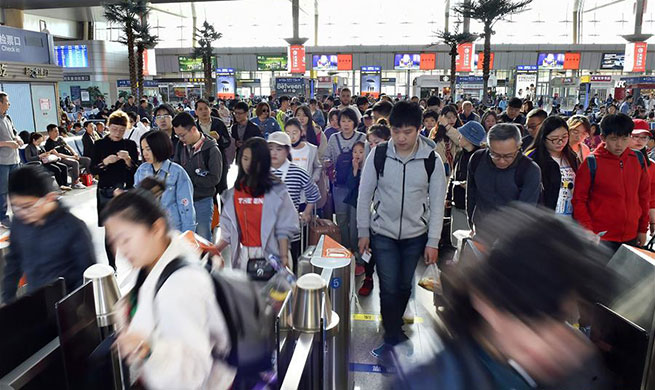by Peter Mertz
GRAND CANYON, the United States, May 1 (Xinhua) -- China will soon overtake Europe to become the top outbound tourist market of the U.S. state of Arizona, tourism officials here have said.
"We expect China to become our number one overseas tourist market by 2025," Scott Dunn, public information officer for the Arizona Tourism Board (ATB), told Xinhua in a recent interview.
Chinese visitors currently lag behind Germany, France and Britain with 81,000 travelers per year to the Grand Canyon, America's prime tourist attraction and one of the seven natural wonders of the world.
"We have seen an increase of 286 percent from 2010 to 2017: a monumental growth from the China market," Dunn said, adding that the number of Chinese tourists to the Grand Canyon soared from 21,972 in 2010 to 81,373 in 2017.
ARIZONA'S EFFORTS
With the 2019 tourism year just having started, Arizona, home to a number of world class attractions, is hedging its bet and focusing on China's burgeoning middle class of 400 million people.
Thanks to Dunn and his China expert, deputy director Becky Blaine, ATB is setting a national example for attracting Chinese visitors.
"Cultural nuances are very important to address," Dunn said.
ATB held several Chinese seminars last year, teaching local businesses how to engage travelers from China, giving tips on how to work with Chinese tour operators, helping Arizona businesses to translate websites into Chinese, and listing a variety of other Chinese cultural specifics to enhance Chinese visitors' experience in the Grand Canyon state.
Signage is another important add-on with a number of key tourism sites recently translating information signs into Mandarin to enhance the experience of Chinese tourists.
As America's second most visited national park, the Grand Canyon hosts some 6 million tourists a year.
MISSED MONEY
The McKinsey Global Institute (MGI) predicted that China's middle class is expected to hit 520 million people by 2025, and with a disposable income of more than 2 trillion U.S. dollars, this young, travel-hungry group is a sought-after market with limitless potential.
With San Jose in California adding direct flights to China in 2016, other western U.S. cities, including Denver, Colorado and Salt Lake City, Utah, have been considering direct access to the world's second-largest economy.
"A game changer," said Dunn of direct flights from Phoenix, capital of Arizona to China, hot on the radar of local businesses.
Potentially, this would allow "millions of Chinese visitors" to fly into the Valley of the Sun, where businesses might thrive from Chinese spending and investment, Dunn added.
In the bordering state Colorado, former Governor John Hickenlooper, now a Democratic presidential runner, heavily courted Chinese investment in his state, a business strategy with no virtual downside.
Similar efforts have been made in Utah, where conservative lawmakers have spurred the state's economy by bringing Chinese investors and tourists to the Beehive State.
But Arizona's political leadership, and its Republican Governor Doug Ducey have not followed the lead of their neighbors, much to the dismay of big business.
"While some companies are already focusing on the evolution of this new class, many others have yet to broaden their vision and thus risk missing a significant opportunity," the World Travel & Tourism Council (WTTC) said in its annual report.
Some conservative politicians' attitude have not slowed down ATB officials, who see the vast potential across the Pacific.
"There is an Arizona channel on WeChat, and we conduct trade missions to Chengdu and Beijing (in China)," Dunn said.
